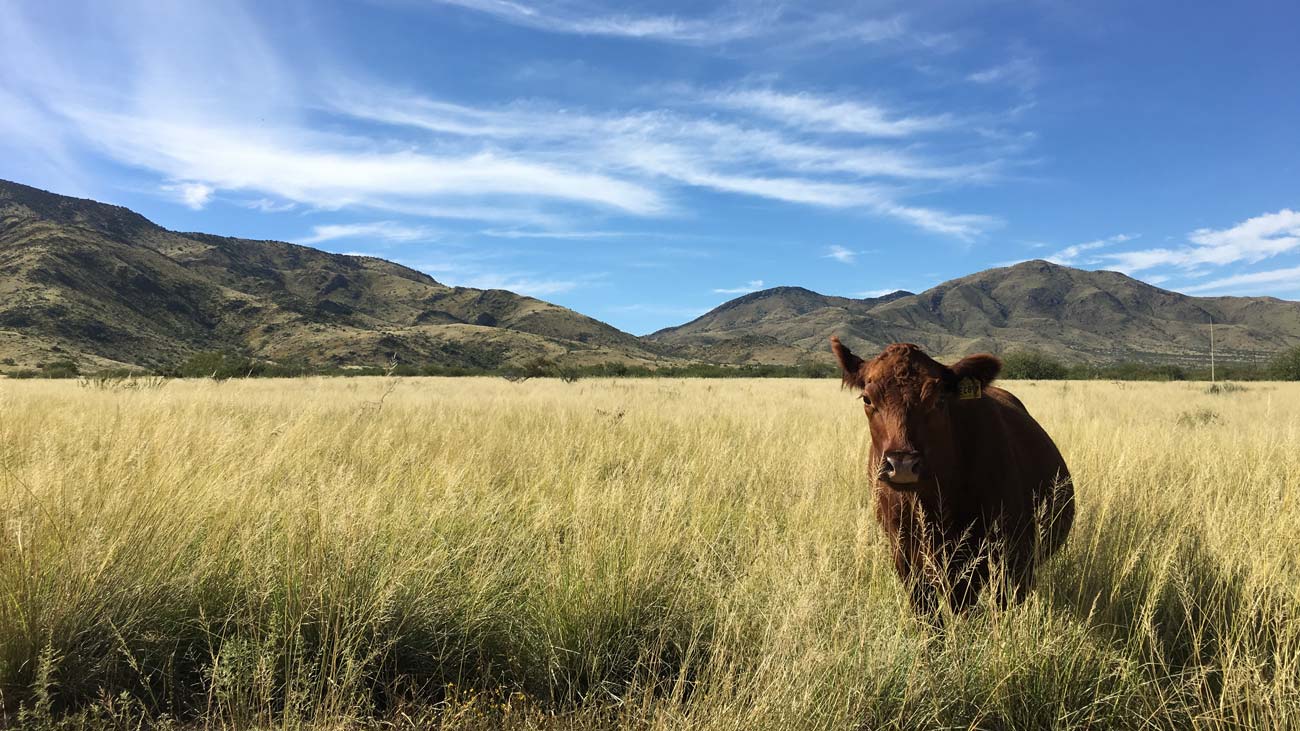From Gate to Plate: Exploring Beef, Nutrition, and Ranching Perspectives in Arizona
TIFFANY SELCHOW, DIRECTOR OF SOCIAL MARKETING AND CONSUMER OUTREACH | April 26, 2024
Gilman’s talk, titled “Not Your Father’s Beef,” covered the evolution of beef over the past half a century and beef producers' response to consumer expectations. She also covered common misconceptions about eating beef and gave correct information that disputes those myths. For example, to address the claim that “Americans eat too much beef,” Gilman highlighted MyPlate, the infographic representing the United States Dietary Guidelines for Americans, that recommends adults consume 5-6.5 ounces of lean protein daily. On average, Americans consume 1.7 ounces of beef daily (1). Another surprising fact shared was that more than half of beef’s fatty acids are monounsaturated (good) fat – the same heart-healthy fat found in olive oil. 1/3 of beef’s saturated fatty acid is stearic acid, a neutral fat that does not raise cholesterol levels, and 10% or less of saturated fat and total fat in the American diet comes from beef (2).
“As an instructor, I always appreciate the rich learning opportunities provided to our students by Tiffany and Lauren at the AZ Beef Council whether we are visiting a ranch, a feedlot or a cooking competition that centers around beef. During our recent tour of Santa Rita Ranch, the McGibbons were as generous and attentive as ever, sharing their knowledge and experience about beef with our graduate students and future registered dietitian nutritionists. Our students are exposed to a vast landscape of media and information about food and farming, and experiences like our tours to the ranch give them invaluable perspective on the dedication our local ranchers have to food quality, safety, and environmental stewardship,” says Ashlee Linares-Gaffer, MS, RDN, FAND, Associate Professor of Practice and Director, Student Success, Retention and Equity in the School of Nutritional Sciences and Wellness at the University of Arizona.
The students were asked to complete a pre-tour survey which was then compared to a post-tour survey. Before the tour, when participants were asked how often they would recommend eating beef to patients, 45.5% said they would recommend eating beef less often than other proteins like chicken, fish, or plant-based proteins. After the tour, that number dropped to 7.1%, and 92.9% said they would recommend eating beef as often as other protein sources. When asked what participants will remember about how cattle are raised after their experience, one student shared, "A lot of hard work and dedication goes into producing a good quality product."
Registered dietitians are committed to the health and wellness of the clients they serve and are integral to helping our population stay healthy. Their dedication to learning the most current nutrition information is impressive, and the Arizona Beef Council is proud to be a part of that continued education by annually hosting Gate to Plate tours, with grant funds and support from the Iowa Beef Industry Council (IBIC).
Sources:
- U.S. Department of Agriculture / U.S. Department of Health and Human Services. 2015-2020 Dietary Guidelines for Americans. 8th Edition, Washington, DC: U.S. Government Printing Office, December 2015.
Zanovec M, et al. Lean beef contributes significant amounts of key nutrients to the diets of US adults: National Health and Nutrition Examination Survey 1999- 2004. Nutr Res 2010;30:375-81. - Source: Hunter JE, Zhang J, Kris-Etherton PM. Cardiovascular disease risk of dietary stearic acid compared with trans, other saturated, and unsaturated fatty acids: a systematic review. Am J Clin Nutr 2010;91(1):46-63.
Based on 3-ounce cooked serving, composite of trimmed retail cuts, all grades, 0” trim, separable lean only.
USDA, ARS, Nutrient Data Laboratory. USDA National Nutrient Database for Standard Reference, Release 28. Version Current: September 2015.
Zanovec M, et al. Lean beef contributes significant amounts of key nutrients to the diets of US adults: National Health and Nutrition Examination Survey 1999-2004. Nutr Res 2010;30:375-81
###
About the Beef Checkoff Program
The Beef Checkoff Program was established as part of the 1985 Farm Bill. The checkoff assesses $1 per head on the sale of live domestic and imported cattle, in addition to a comparable assessment on imported beef and beef products. States may retain up to 50 cents on the dollar and forward the other 50 cents per head to the Cattlemen’s Beef Promotion and Research Board, which administers the national checkoff program, subject to USDA Approval. For more information, visit BeefBoard.org.
About the Arizona Beef Council
The Arizona Beef Council is a non-profit organization served by a Governor-appointed nine-member board of directors representing cattle growers, cattle feeders, and dairy farmers. These volunteers oversee Arizona’s Beef Checkoff-funded programs.
About the Iowa Beef Industry Council
The Iowa Beef Industry Council is funded by the $1-per-head national Beef Checkoff Program and the $0.50-per-head Iowa State Beef Checkoff. Checkoff dollars are invested in beef promotion, consumer information, research, industry information and foreign market development, all with the purpose of strengthening beef demand. For more information, visit iabeef.org.
